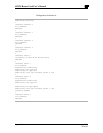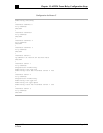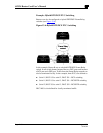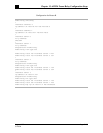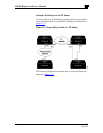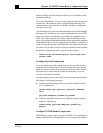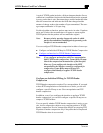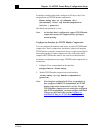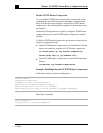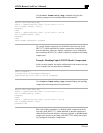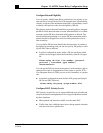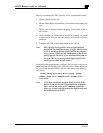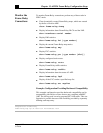
AI2524 Router Card User’s Manual
Page 13-40 August 1997
2524UM
A typical TCP/IP packet includes a 40-byte datagram header. Once a
connection is established, the header information need not be repeated
in every packet that is sent. Reconstructing a smaller header that iden-
tifies the connection and indicates the fields that changed and the
amount of change reduces the number of bytes transmitted. The aver-
age compressed header is 10 bytes long.
For this algorithm to function, packets must arrive in order. If packets
arrive out of order, the reconstruction will appear to create regular
TCP/IP packets but the packets will not match the original.
Note: Because priority queuing changes the order in which
packets are transmitted, enabling priority queueing on th
interface is not recommended.
You can configure TCP/IP header compression in either of two ways:
z
Configure an Individual IP Map for TCP/IP Header Compression
z
Configure an Interface for TCP/IP Header Compression
Note: If you configure an interface with Cisco encapsulation
and TCP/IP header compression, Frame Relay IP maps
inherit the compression characteristics of the interface.
However, if you configure the interface with IETF
encapsulation, the interface cannot be configured for
compression. Frame Relay maps will have to b
configured individually to support TCP/IP header
compression.
Configure an Individual IP Map for TCP/IP Header
Compression
TCP/IP header compression requires Cisco encapsulation. If you need
to have IETF encapsulation on an interface as a whole, you can still
configure a specific IP map to use Cisco encapsulation and TCP
header compression.
In addition, even if you configure the interface to perform TCP/IP
header compression, you can still configure a specific IP map not to
compress TCP/IP headers.
You can specify whether TCP/IP header compression is active or pas-
sive. Active compression subjects every outgoing packet to TCP/IP
header compression. Passive compression subjects an outgoing TCP/
IP packet to header compression only if the packet had a compressed
TCP/IP header when it was received.



